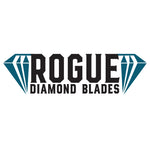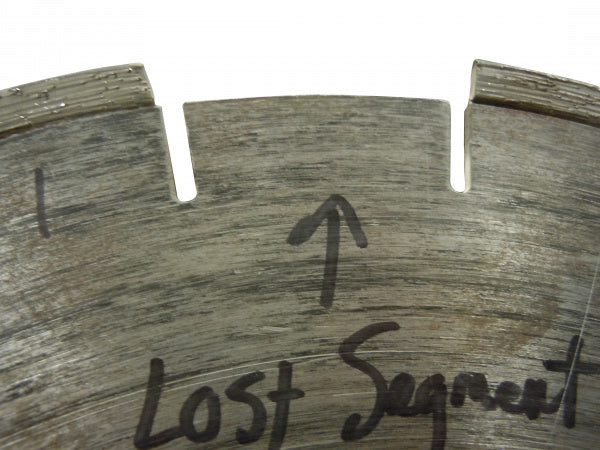Diamond blades are an extensively used cutting tool in numerous industries, such as construction, masonry, and metalworking. These blades are composed of diamond particles encased in a metal matrix, making them highly durable and effective for cutting through tough materials such as concrete, stone, and metal. However, despite their popularity, many users of diamond blades make errors that can result in accidents, injuries, and blade damage. In this article, we will discuss some common errors to avoid when using diamond blades in order to do so safely and efficiently.
Choosing the Wrong Blade
One of the most frequent errors people make when using diamond blades is selecting the incorrect blade for the task. There are various varieties of diamond blades, each designed for particular materials and applications. For example, a blade designed to cut concrete may not be appropriate for cutting asphalt or masonry. To avoid damaging the blade, the material being cut, or causing an accident, it is essential to select the appropriate blade for the task.
When selecting a diamond blade, keep in mind the following factors:
- The material that will be sliced
- The density of the material
- The type of saw you will employ The saw's RPM
- The length of the blade
Not Wearing Protective Gear
Another common error when using diamond blades is not donning protective equipment. When cutting, diamond blades generate a great deal of dust, debris, and commotion, which can be hazardous to your health and safety. To protect yourself from flying debris, dust, and noise, it is essential to don protective equipment such as safety glasses, earplugs, dust masks, and gloves.
Using a Worn-out Blade
Cutting materials with a dull diamond blade is a common error made by individuals. Diamond blades deteriorate over time, and the use of a dull blade can be hazardous. When a blade becomes worn, it can overheat, warp, and break, resulting in accidents, injuries, and harm to the material being cut. Overheating can also cause diamond particles to separate, reducing the efficacy of the blade and resulting in a poor cut.
It is essential to replace your diamond blade when it becomes damaged or worn. Examine the blade for signs of wear, such as a worn-down rim or a loss of cutting ability, to determine if it is worn out. In addition, it is essential to remember that using a diamond blade beyond its intended lifespan can incur superfluous costs and increase the likelihood of accidents.
Installing the Blades Incorrectly
The implementation of diamond blades incorrectly is a second frequent error made by users. Incorrect installation of the blade can cause it to vibrate, resulting in an uneven cut, blade damage, or an accident. Incorrect installation can also result in the blade detaching from the saw, which can be hazardous.
To avoid improper blade installation, it is essential to meticulously adhere to the manufacturer's instructions. Ensure that the saw is turned off and disconnected from the power source before installing the blade. Examine the blade carefully to ensure it is free of flaws or damage. In addition, ensure that the blade is securely mounted and centered on the saw. Using a blade that has been inadequately installed can lead to blade failure, which can be extremely hazardous.
Overheating the Blade
The overheating of the diamond blade is another frequent mistake made by individuals when cutting materials. Exceeding this temperature range can cause the blade to warp, crack, or shatter, which can result in accidents, injuries, and damage to the cutting material. Overheating can also hasten the blade's loss of sharpness, reducing its effectiveness and increasing the risk of accidents.
A cutting speed that is too slow may cause the blade to overheat, whereas a cutting speed that is too rapid may result in blade wear and diminished cutting ability. Adding water to cool the blade during the cutting procedure is also essential. Water aids in heat dissipation, reducing the danger of blade overheating and extending its lifespan. Finally, avoid applying excessive force to the blade, as doing so can cause it to oxidize and wear out rapidly.
Cutting Wet Materials with Dry Blades
People frequently presume that, when cutting wet materials with dry blades, the diamond blade will perform identically to when cutting dry materials. Nonetheless, this is a prevalent error that can have severe consequences. Diamond blades are designed to cut through dry materials, and using them on damp materials can significantly accelerate the blade's wear. This is due to the fact that water can wipe away the diamond particles on the blade, diminishing its cutting ability and causing an uneven cut.
When cutting damp materials, it is essential to use a wet diamond blade to avoid these issues. The design of a wet diamond blade enables it to operate effectively in wet conditions without sustaining damage or posing a safety risk. Wet diamond blades have a constant flow of water that cools the blade and flushes away debris, ensuring a clean and efficient cut. This reduces the likelihood of accidents, injuries, and material damage.
Improper Use of the Blade
Although diamond blades are extraordinarily versatile, they are not designed for duties ncluding piercing, chiseling, and grinding.
Using the blade for such purposes can result in the blade becoming damaged, which can lead to accidents, injuries, and material damage. For instance, if the blade is used to pry or chisel, it can become worn or chipped, reducing its cutting effectiveness. Similarly, if the blade is utilized for grinding, it can become clogged with debris, diminishing its cutting ability and resulting in irregular cuts.
If you need to pry or chisel, use a tool that is intended specifically for those tasks. When grinding, use a grinding wheel rather than a diamond blade. This will ensure that the diamond blade remains in excellent condition and is ready for use whenever it is required.
Wrong Cutting Speed
Using the incorrect cutting speed is another frequent error made by users of diamond blades. Cutting too rapidly or too slowly can cause the blade to overheat or quickly wear out, leading to accidents, injuries, and material damage.
Several factors determine the cutting pace, including the material being cut, its thickness, and the type of blade being used. If the cutting speed is too sluggish, the blade can become overheated, leading to warping or cracking.
The cutting speed can be altered by adjusting the saw's speed or by employing a blade intended for a particular cutting speed. If you are uncertain about the appropriate cutting speed for a particular material, consult the manufacturer's instructions or consult an expert. By utilizing the appropriate cutting speed, you can ensure that the blade operates efficiently and effectively while minimizing the risk of accidents, injuries, and material damage.
Using a Defective Blade
A damaged blade can result in uneven incisions, material damage, or an accident. Therefore, it is crucial to examine the blade prior to each use and replace it if it is damaged, warped, or fractured.
Failure to Clean the Blade
Failing to clean the diamond blade is next on our list. People usually do not clean their blades before using them. Dust, debris, and other particles can accumulate on the blade over time, reducing its efficacy and accelerating its wear. Therefore, it is essential to clean the blade with a wire brush, water, and a moderate detergent after each use in order to remove any debris and maintain the blade in good condition.
Using the Blade Beyond its Capacity
Using the diamond blade beyond its capacity is another frequent error made by individuals when cutting materials. Diamond blades are designed to cut specific materials and thicknesses, and exceeding their capacity can cause the blade to rapidly wear out, overheat, or break, resulting in accidents, injuries, and damage to the material being cut. Therefore, it is crucial to prevent cutting materials that are too thick or tough for the blade's capacity.
Using the Blade at the Wrong Angle
Another common mistake when cutting materials is using the diamond blade at the wrong angle. Using the blade at the incorrect angle can result in uneven cuts, material harm, or an accident. To ensure a clean, even cut, it is essential to use the blade at the correct angle and adjust it as necessary.
Failure to Use Coolant
Failing to use coolant when slicing materials is another frequent error made by users of diamond blades. Coolant assists in cooling the blade and preventing overheating, thereby decreasing the risk of injury to the blade and the material being cut and enhancing the quality of the cut. Therefore, it is essential to use a coolant when slicing materials, particularly when slicing dense or difficult materials.
Rogue Diamond Blades: Your Professional Aid
Rogue Diamond Blades is committed to providing our clients with high-quality diamond blades that are tailored to their particular cutting requirements. Our team of experts is always available to provide the support and guidance you need to make the best decision for your cutting requirements.
Experience the convenience and quality of our diamond blades by visiting our website!

